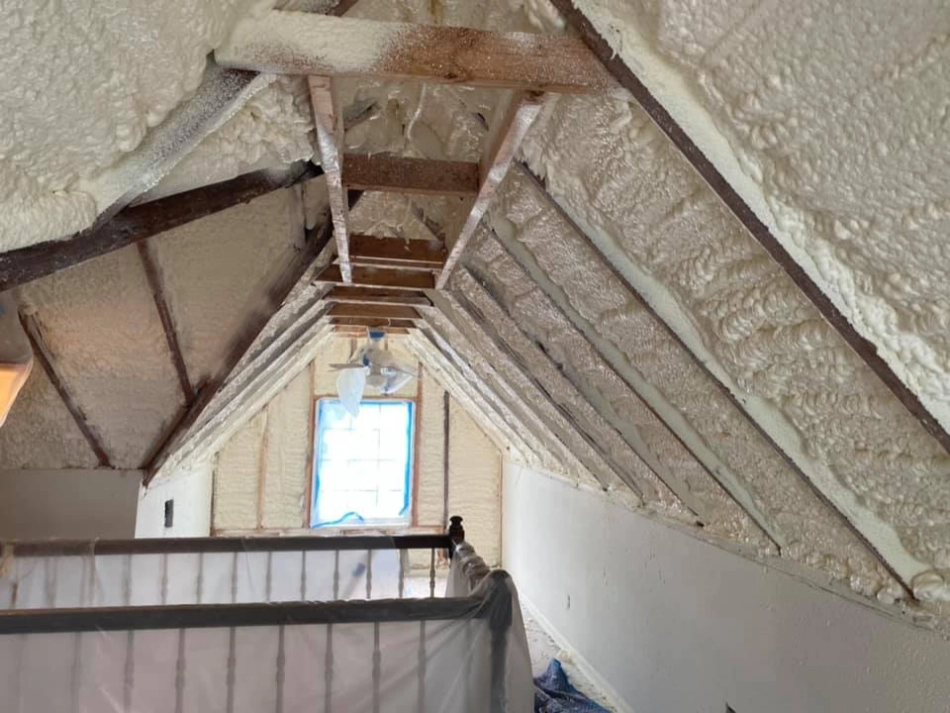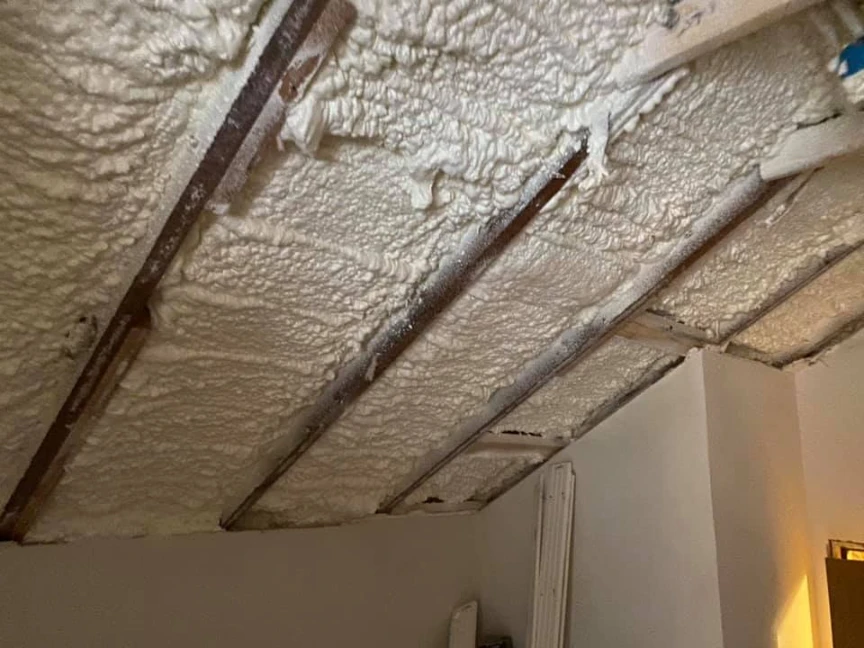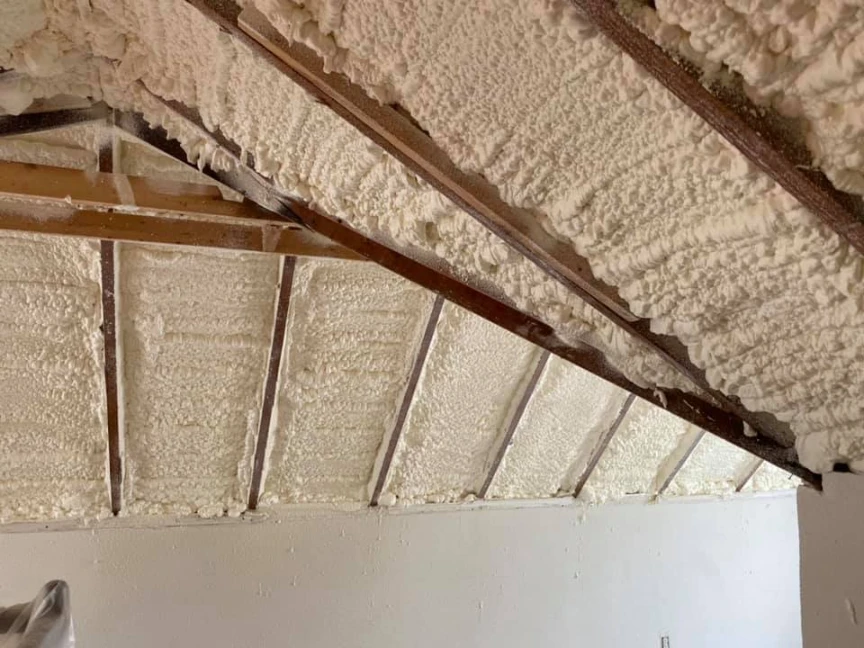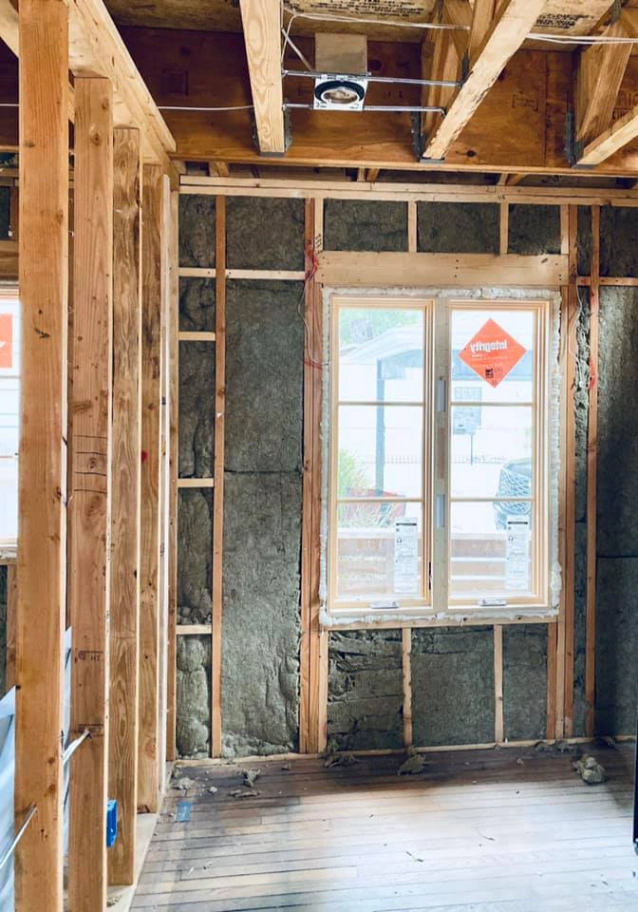Spray foam insulation is ideal for irregular and hard-to-access areas because it expands upon application, conforming tightly to the shape of the space. This characteristic allows it to fill voids, gaps, and cracks in corners, around joists, between studs, and over uneven surfaces where rigid or batt materials leave air pockets.
Spray foam creates an air seal that prevents conditioned air loss and reduces outdoor air infiltration. This improves energy efficiency and helps maintain consistent indoor temperatures, even in difficult-to-insulate zones. Stellrr has applied spray foam insulation in tight crawlspaces, around complex rooflines, and within non-standard framing layouts across Central Texas homes and buildings.
The following content explains the technical advantages, compares other insulation options, outlines application realities, and includes expert-backed insights based on real jobsite experiences.
Key Benefits of Spray Foam in Non-Standard Spaces
| Feature | Spray Foam | Fiberglass Batts | Rigid Foam Boards | Cellulose Loose-Fill |
|---|---|---|---|---|
| Conforms to irregular shapes | Yes | No | No | Partial (requires netting) |
| Air sealing capability | High (closed-cell) | Low | Medium | Low |
| Moisture resistance | High (closed-cell) | Low | High | Low |
| Structural reinforcement | Yes (closed-cell) | No | Yes | No |
| Installable in vertical areas | Yes | Yes | Difficult | Difficult |
| R-value per inch | 6.0-7.5 (closed-cell) | 2.9-3.8 | 4.5-5.0 | 3.2-3.8 |
Technical Data and Installation Considerations
| Specification | Open Cell Spray Foam | Closed Cell Spray Foam |
|---|---|---|
| R-Value per Inch | ~3.5 | ~6.5 |
| Expansion Ratio | 100:1 | 30:1 |
| Density | ~0.5 lb/ft³ | ~2.0 lb/ft³ |
| Water Resistance | Low | High |
| Air Barrier | Yes | Yes |
| Vapor Barrier | No | Yes (at sufficient thickness) |
| Sound Dampening | High | Moderate |
| Application Surfaces | Rooflines, walls, crawlspaces | Walls, crawlspaces, exteriors |
| Ideal Temperature Range | 40°F and up | 40°F and up |
Bonus Tip: Closed-cell spray foam is the preferred choice in crawlspaces and basements due to its resistance to moisture absorption and mold growth.
Regional Application Insight for Central Texas
Central Texas homes often include pier-and-beam crawlspaces, vaulted ceilings, and open attic areas where traditional insulation falls short. Spray foam addresses:
- Seasonal humidity swings: Closed-cell foam reduces moisture infiltration that leads to condensation and mold.
- Attic heat gain: Foam applied to roof decks keeps attic temperatures within 10-15°F of the living space.
- Pest deterrence: A sealed foam layer limits entry points used by insects and rodents.
Bonus Tip: In unvented attic assemblies, open-cell foam can be used safely in Central Texas if paired with appropriate vapor retarders.
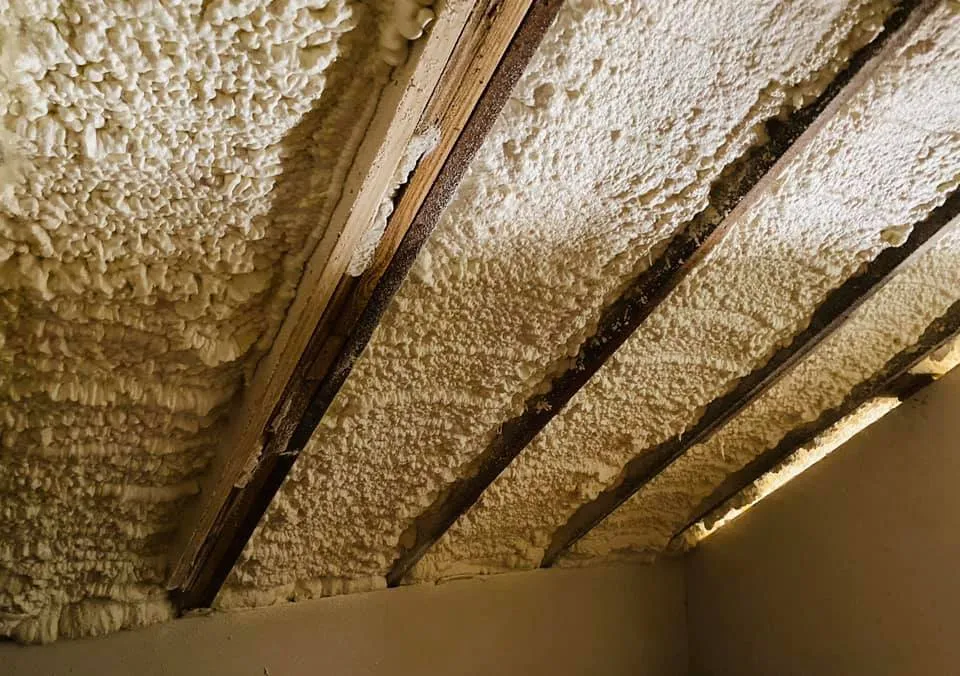
Things to Consider Before Making a Decision
- Space Access: Sufficient access is needed for spray rigs and hose routing.
- Code Requirements: Verify compliance with local energy codes and ignition barrier needs.
- Budget Alignment: Spray foam carries a higher upfront cost than traditional materials.
- Target Performance Goals: Consider the need for air sealing, moisture control, or sound isolation.
- Substrate Conditions: Clean, dry surfaces ensure better adhesion and foam consistency.
Relevant Insulation Services Stellrr Offers
- Crawlspace Insulation: Applied directly to subflooring or foundation walls to block moisture and cold air.
- Wall Insulation: Fills wall cavities in both retrofit and new construction using open or closed-cell foam.
- Attic Insulation: Applied to roof decks or attic floors to reduce heat gain and seal air leaks.
- Insulation Removal: Safely removes outdated or contaminated insulation before installing spray foam.
Common Questions About Spray Foam for Irregular Areas
Can spray foam be applied behind electrical wiring or pipes?
Yes. The foam expands around obstructions without displacing them, creating a tight seal.
Is there a difference in using spray foam vertically versus horizontally?
Closed-cell adheres well in both orientations. Open-cell may need pass layering to prevent dripping on overhead applications.
How thick should spray foam be in these areas?
Closed-cell: 2-3 inches minimum. Open-cell: 3.5 inches minimum to meet typical thermal standards.
Will it trap moisture in humid climates like Central Texas?
Closed-cell resists moisture absorption. Open-cell requires vapor retarders when applied in high-humidity zones.
Get Expert Insulation Guidance
For complex or irregular structures, professional planning is key. Stellrr provides experience-backed spray foam solutions that address performance and code compliance.
Contact Stellrr:
Email: info@stellrr.com
Phone: (512) 710-2839
FAQs
How long does spray foam last in irregular cavities?
Properly applied spray foam lasts over 30 years without shrinkage or degradation.
Can spray foam be used in combination with other materials?
Yes. Hybrid systems often pair foam with batts or boards for specific performance outcomes.
What happens if spray foam is applied too thick?
Overapplication in a single pass can cause off-gassing or improper curing. Certified installers avoid this.
Can rodents chew through spray foam?
Foam is not a food source but rodents can burrow if not deterred. Sealing entry points is key.
Does it require ventilation during installation?
Yes. Ventilation is needed during and shortly after install to clear any airborne chemicals.


